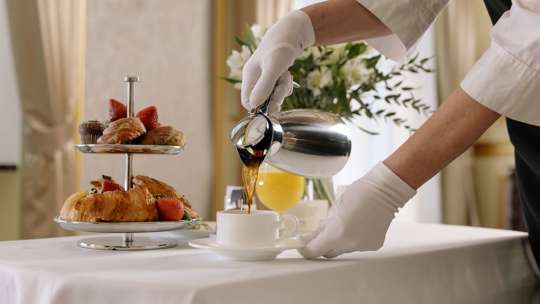
Tea for breakfast
Whether you are looking for a tea to pair with croissants or you want to know what to eat with english breakfast tea - we have got the perfect pairing for your breakfast.
Discover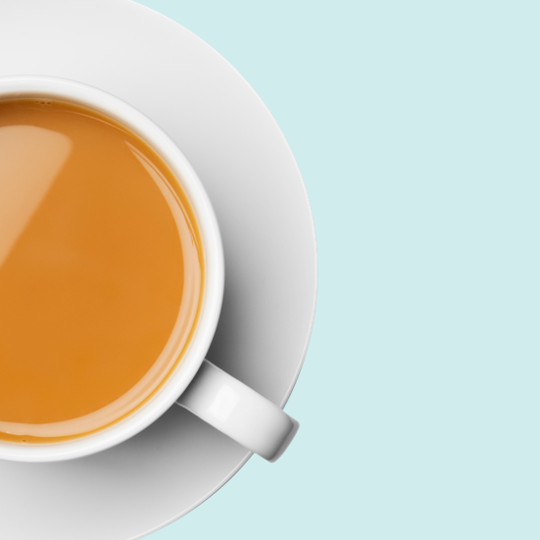
Tea may seem like a simple infusion of leaves, water and time, but it’s much more than that. It's a language, an art, a science and a symbol of many cultures, steeped in rich history and tradition. At Cafè Du Monde, we take all things beverage incredibly seriously, and that includes the vast variety of teas. Our collection of teas includes your classic Earl Grey and English breakfast, as well as some delightful and refreshing fruity-flavoured teas. In our Ultimate Guide to Tea, we’re providing a comprehensive journey through tea, as we explore its roots, its diverse forms, and its place in cultures across the globe.
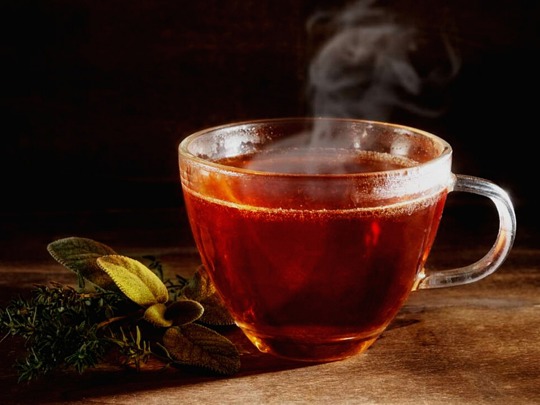
The narrative of tea unfolds in ancient China, dating back to 2737 BC. Legend tells us of Chinese emperor Shen Nung, who happened upon tea when a gust of wind swept leaves from a wild tree into his boiling water pot. The ancient brew was initially enjoyed for its medicinal properties, later transitioning to an everyday libation during the Tang Dynasty. This humble leaf infusion would grow in popularity to traverse the globe, weaving itself into the fabric of many societies. Its influence extended to playing a pivotal role in significant historical events. One of these was the famed Boston Tea Party, where tea took centre stage in a rebellious act of defiance.
From China, tea embarked on a fascinating trade odyssey. Buddhist monks carried it across the Himalayas, planting seeds of tradition in Japan and Korea. The Silk Road, a vibrant artery of commerce, transported tea westward, weaving its magic into Persian and Arab cultures. Europe's encounter with tea arrived via Portuguese and Dutch traders, sparking curiosity and a burgeoning demand. As we know, England, in particular, fell head over heels for tea. Introduced in the 17th century, it quickly ascended to a national obsession. Afternoon tea, a quintessentially British ritual, transformed the humble cup into a symbol of social etiquette and leisurely grandeur. The Boston Tea Party in 1773, a pivotal event in the American Revolution, stands as a testament to the political and economic weight that tea now held.
Today, tea is a global affair, encompassing various flavours, brew methods and pairings. From the smoky Darjeeling of the Himalayas to the vibrant chai of India, each region boasts unique cultivars and brewing methods, reflecting local terroir and cultural heritage. In Japan, the precise art of matcha tea ceremonies cultivates inner peace, while Morocco celebrates mint tea as a cornerstone of hospitality, and in the UK, tea is a staple of any time of the day, a welcome drink when you enter someone’s home and a symbol of the nation.
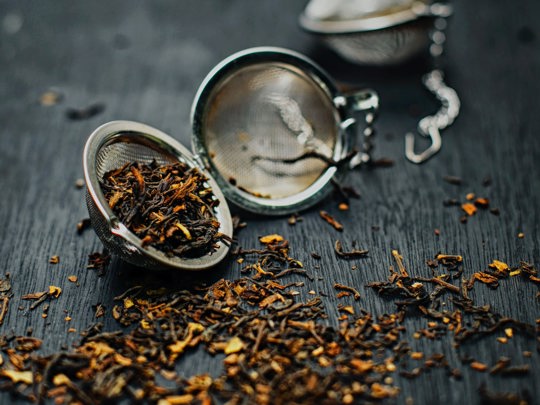
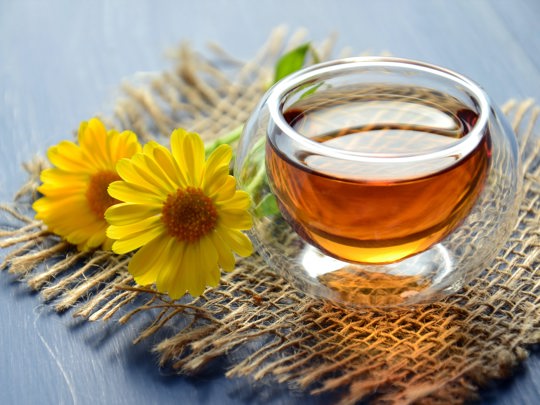
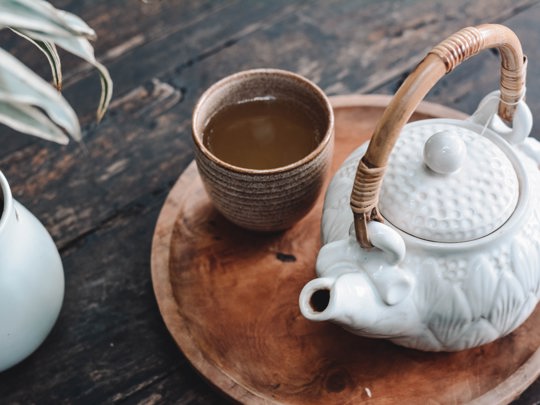
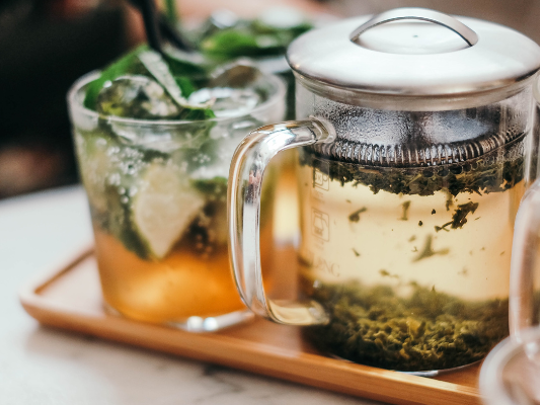
The simple act of drinking tea is experiences and valued across cultures. Each steeped in history and woven with unique flavours of meaning. Below, we’ll explore some of the cultures that truly value the art of tea and how exactly they express tradition through tea.
China: Where It All Began
Jasmine Tea and Poetry: Infused with fragrant jasmine blossoms, this tea inspires poetic musings and elegant social gatherings.
Dragon Well Tea: Renowned for its emerald leaves and "dancing" in the hot water, this green tea holds cultural significance for its association with prosperity and well-being.
Japan: Zen Serenity in a Steaming Cup
Chanoyu (The Way of Tea): An intricate ritual rooted in Zen Buddhism, Chanoyu emphasizes harmony, simplicity, and mindfulness through every step of tea preparation and consumption.
Matcha: Finely ground green tea whisked into frothy goodness, matcha embodies spiritual focus and cultural refinement and in recent years has become a popular staple across the world.
Sakura Mochi and Sencha: Delicate cherry blossom rice cakes paired with sencha green tea represent the fleeting beauty of springtime and reflect Japan's love for seasonal flavors.
Morocco: Hospitality in a Glass of Mint
Peppermint Tea Ritual: A symbol of warm welcome and social connection, this tradition involves intricately pouring and swirling tea in ornate glasses, creating a delightful spectacle.
Sugar Cubes and Tradition: Traditional mint tea is served with copious amounts of sugar, signifying generosity and sweetness in relationships.
Shared Moments: Tea drinking in Morocco is not just about the beverage, but a chance to gather with family and friends, forge bonds, and share stories.
India: Masala Chai - A Symphony of Spices
Chai Wallahs: Mobile tea stalls run by chai wallahs fuel the nation's engine, offering piping hot masala chai (spiced tea) to invigorate and connect.
Spice Blends and Rituals: Cardamom, ginger, and cinnamon infuse daily routines, from morning awakenings to social gatherings, with warmth and aroma.
Sweet Treats and Sips: Sweet Indian biscuits like samosas and pakoras often accompany chai, creating a comforting and delicious ritual.
Beyond Borders: A Melting Pot of Tea Traditions
Afternoon Tea in England: A quintessentially British experience, afternoon tea features delicate finger sandwiches, scones with clotted cream, and an array of teas paired with elegant etiquette.
Russian Samovar Culture: The iconic samovar, a communal tea urn, fosters warmth and unity, bringing families and friends together for shared cups of strong black tea with lemon and sugar.
Turkish Tea Ceremonies: Strong black tea served in tulip-shaped glasses amidst lively conversation defines Turkish hospitality, and is enjoyed throughout the day as a social equaliser.
This is just a taste of the diverse world of tea traditions. Each culture offers a unique lens through which to appreciate this remarkable beverage, reminding us that the simple act of sharing a cup can be a powerful form of connection, cultural expression, and sensory delight.
From the rugged slopes of Darjeeling to the lush meadows of Kenya, each tea-producing region boasts unique terroirs and traditions that translate into distinct flavour profiles and tea varieties
China:
Eastern Zhejiang: Delicate green teas like Longjing and Dragon Well, are known for their vegetal notes and smooth finish.
Fujian: Robust oolongs like Da Hong Pao, famed for their complex, layered flavours and intense aromas.
Yunnan: Rich, earthy black teas like Yunnan Gold, perfect for milk and sugar.
India: Renowned for its bold black teas
Darjeeling: "The Champagne of teas," Darjeeling produces light, muscatel-toned black teas with floral and citrusy notes.
Assam: Strong and malty, Assam teas like English Breakfast are perfect for kick-starting your day.
Nilgiri: Aromatic and refreshing, Nilgiri teas evoke hints of honey and mint, ideal for iced versions.
Japan: Matcha and beyond
Shizuoka: Sencha, the quintessential Japanese green tea, with vegetal and grassy notes.
Uji: Matcha, the finely powdered green tea used in traditional ceremonies, boasts a vibrant umami flavour.
Kagoshima: Hojicha, roasted green tea with earthy, nutty notes, perfect for after dinner.
Kenya: The land of vibrant black teas
Kericho: Rich and full-bodied, Kericho teas are ideal for blending and robust breakfasts.
Murang'a: Bright and citrusy, Murang'a teas are perfect for afternoon brews.
Kisii: Known for its golden colour and subtle floral notes, Kisii tea brings a touch of elegance.
Sri Lanka: Formerly Ceylon, Sri Lanka offers a delightful balance of black tea styles
Low-country: Full-bodied black teas like Nuwara Eliya, with hints of spice and fruit.
Mid-country: Aromatic and balanced teas like Dimbula, perfect for any time of day.
High-country: Delicate and floral teas like Uva, ideal for afternoon tea breaks.
This is just a glimpse into the vast world of tea regions and their flavours. Each area has its own sub-regions, microclimates, and processing techniques, further enriching the incredible history of the humble cup of tea.
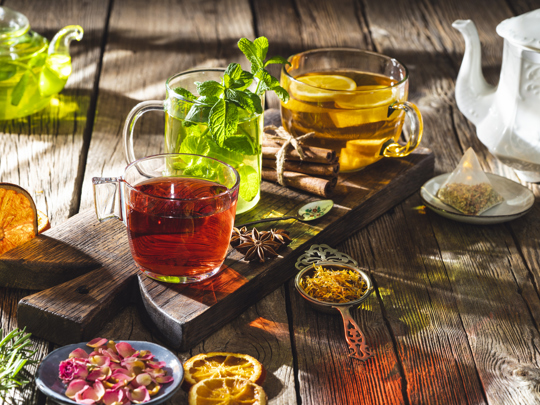
We've touched upon the diverse flavours and varieties of tea across different regions, but how does each area transform the humble tea plant into unique brews?
Green Tea Paradise: Zhejiang province is home to the meticulous production of Longjing and Dragon Well teas. Hand-picking the youngest buds and leaves ensures delicate flavours. Steaming and pan-frying techniques lock in the vibrant green colour and grassy notes.
Oolong: Fujian province specialises in complex oolongs like Da Hong Pao. Partial oxidation balances the green tea character with a hint of black tea's robustness. Charcoal roasting adds a smoky depth to the final brew.
Pu-erh: Yunnan province boasts Pu-erh tea, a fermented black tea that undergoes microbial ageing. Piled storage or compressed cakes create unique earthy and woody flavours.
Darjeeling: The Darjeeling region utilizes manual plucking and careful processing to preserve the tea's delicate muscatel notes. Two leaves and a bud (called "two leaves and a bud") are typically harvested for optimal flavour.
Assam: Assam's lush plains yield robust black teas like English Breakfast. Machine plucking is efficient for larger harvests, while full oxidation and CTC (crush, tear, curl) processing deliver a strong, malty character.
Nilgiri: High-altitude Nilgiri estates produce light and fragrant black teas. Orthodox processing, involving slow withering and full oxidation, preserves the tea's natural sweetness and floral notes.
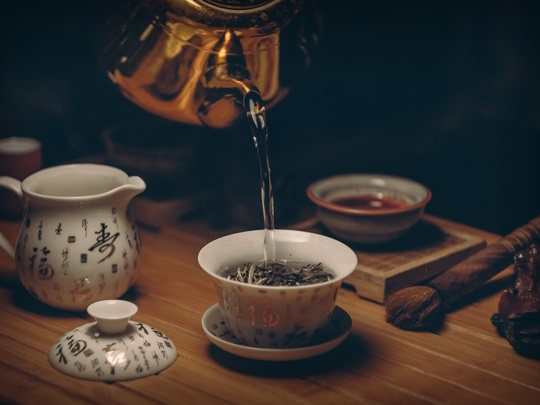
Sencha: Shizuoka prefecture is renowned for its Sencha green tea. Steaming freshly harvested leaves preserves the grassy and vegetal character. Multiple steepings reveal the tea's nuanced flavours.
Matcha: Uji region produces the prized matcha powder. Shade-grown tea plants are hand-picked and stone-ground into a vibrant green powder, capturing the tea's intense umami flavour
Hojicha: Kagoshima prefecture specialises in Hojicha, a roasted green tea. Roasting transforms the leaves into a reddish-brown hue, imparting nutty and earthy notes, perfect for evenings.
Kericho: The fertile Kericho region produces strong black teas like English Breakfast. CTC processing creates a quick-brewing tea with a bold and malty character, ideal for mornings.
Murang: Murang'a teas offer a brighter and more citrusy profile compared to Kericho. Orthodox processing allows the natural flavours to shine, making them perfect for afternoon tea.
Kisii: Kisii teas are known for their golden colour and subtle floral notes. Orthodox processing and higher elevation contribute to their delicate sweetness and complexity.
Low-country: Nuwara Eliya, a low-country region, produces full-bodied black teas with hints of spice and fruit. CTC processing ensures a quick brew, perfect for a milk tea.
Mid-countrl: Dimbula teas, from the mid-country, offer a balance of strength and aroma. Orthodox processing and moderate elevation create a well-rounded cup with floral and citrusy notes.
High-country: Uva teas, grown at high altitudes, are known for their delicate floral character. Orthodox processing and cool temperatures preserve the tea's subtle sweetness and elegance.
Black Tea:
The stalwart of the tea world, black tea undergoes full oxidation, turning the leaves dark and robust. Processing methods like CTC (crush, tear, curl) produce quick-brewing teas, while orthodox processing creates full-bodied brews.
Caffeine Content: Moderate (40-60mg per cup).
Brewing: Use boiling water and steep for 3-5 minutes. Perfect with milk and sugar for a classic English Breakfast.
Green Tea:
Unprocessed and vibrant, green tea retains its natural green colour and delicate grassy notes. Steaming or pan-frying halts oxidation, preserving the antioxidants and subtle flavours.
Caffeine Content: Moderate (25-40mg per cup).
Brewing: Use water just below boiling point (70-80°C) and steep for 2-3 minutes. Ideal for enjoying pure tea flavours.
White Tea:
The most minimally processed, white tea consists of young buds and unopened leaves. Withering and drying preserves the delicate sweetness and floral notes.
Caffeine Content: Very low (10-20mg per cup).
Brewing: Use cool water (70-80°C) and steep for 2-3 minutes. Perfect for a light and refreshing drink.
Oolong Tea:
A fascinating bridge between green and black teas, oolong undergoes partial oxidation, creating a spectrum of flavours and aromas. Different styles, like Tieguanyin and Da Hong Pao, offer floral, fruity, or even roasted notes.
Caffeine Content: Varied, depending on oxidation level (20-60mg per cup).
Brewing: Use water at variable temperatures (80-95°C) depending on the specific oolong, and steep for multiple short infusions.
Yellow Tea:
A rare and unique tea, yellow tea undergoes slow, controlled oxidation similar to white tea, resulting in a mellow and smooth flavour.
Caffeine Content: Moderate (30-50mg per cup).
Brewing: Use hot water (80-90°C) and steep for 3-5 minutes. Enjoy the subtle sweetness and honeyed notes.
Pu-erh Tea:
A fermented tea, Pu-erh undergoes microbial ageing, developing earthy and woody flavours. Pu-erh comes in compressed cakes or loose-leaf forms and can be aged for years or even decades.
Caffeine Content: Varied, depending on age and processing (20-60mg per cup).
Brewing: Use boiling water for young Pu-erh and lower temperatures for aged Pu-erh. Multiple short infusions are recommended.
Herbal Infusions:
Not technically tea, these infusions use flowers, fruits, herbs, and spices to create flavorful and often caffeine-free beverages. Popular examples include chamomile, peppermint, and ginger.
Caffeine Content: Virtually none.
Brewing: Use boiling water and steep for 5-10 minutes. Ideal for a relaxing and caffeine-free experience.
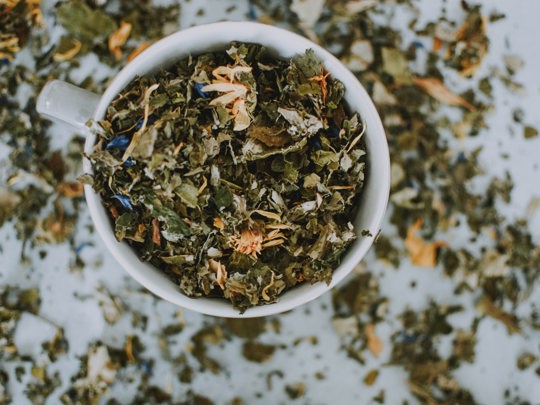
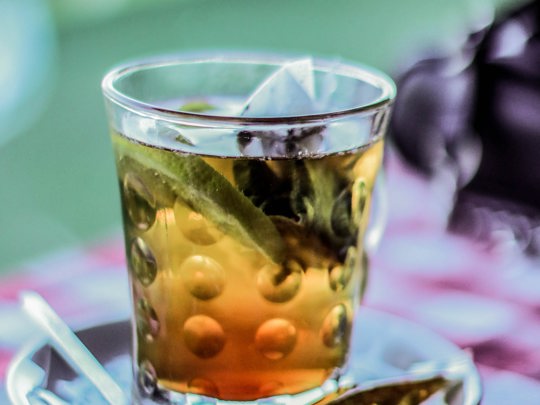
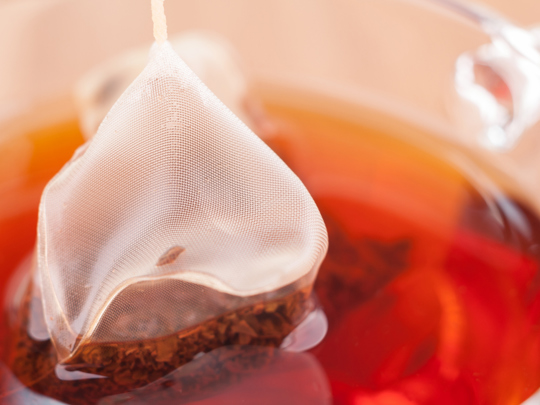
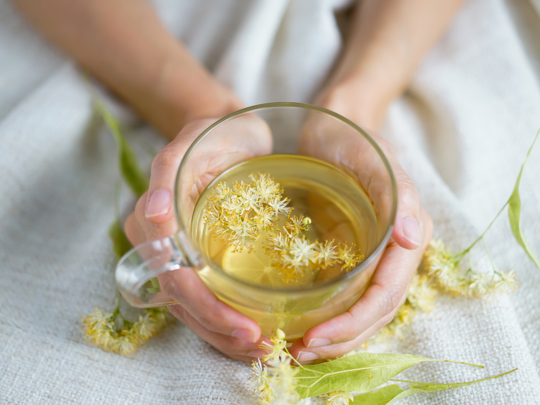
Water: The foundation of a great tea lies in pure, filtered water. Avoid stale or tap water (where possible), as it can negatively impact taste. Spring water is an excellent choice if you’re searching for a pure and delightful tea.
Temperature: Each tea type thrives at specific temperatures. Use boiling water for black teas and around 70-80°C for green and white teas. Oolongs vary based on style, often requiring 80-95°C. Your packet should state the specific temperatures for your chosen brew.
Tea-to-Water Ratio: Aim for 1 teaspoon of loose leaf tea (or 1 tea bag) per 6 ounces of water. Adjust slightly for personal preference: stronger for black teas, lighter for green teas.
Steeping Time: Patience is key! Over-steeping leads to bitterness, while under-steeping leaves flavors undeveloped. Black teas excel at 3-5 minutes, green and white teas at 2-3 minutes, while oolongs can be enjoyed over multiple short infusions.
Infusers: Perfect for individual cups, infusers allow loose-leaf tea to expand and release its flavour fully. Look for fine-mesh infusers to prevent tea particles from escaping.
Teapots: For brewing larger quantities, teapots offer superior temperature control and space for the leaves to unfurl. Choose ceramic or clay teapots for better insulation and flavour retention.
Timers: Avoid guesswork. A simple kitchen timer ensures precise steeping times, preventing bitterness and wasted flavour.
Warm the Vessel: Pre-heat your teapot or cup with hot water to maintain the ideal brewing temperature. Discard the preheating water before adding the tea.
Measure: Use accurate teaspoon measures for loose leaf tea to avoid bitterness or weak brews.
The Pour: Add tea leaves or bags to the preheated vessel and slowly pour in the hot water at the correct temperature.
Steep: Cover the teapot or cup to trap the brewing aromas and let the magic unfold. Set your timer for the perfect steeping time.
Strain: Remove the infuser/tea bag just before the steeping time ends. Pour your perfectly brewed tea into a cup and enjoy!
Bitterness: The likely culprit is over-steeping. Adjust your steeping time and experiment with slightly cooler water for delicate teas.
Weakness: Not enough tea or inadequate steeping time might be the reason. Try a slightly higher tea-to-water ratio or adjust the steeping time.
Chalky Water: Impurities in water can affect taste. Use filtered or spring water for optimal results.
Black Teas: Boiling water and longer steeping times (3-5 minutes) unlock the robust flavours of black teas. Milk and sugar are optional companions.
Green Teas: Delicacy is preferred here. Use cooler water (70-80°C) and shorter steeping times (2-3 minutes) to preserve the subtle grassy notes of green teas. Enjoy them pure or with honey.
White Teas: Cool water (70-80°C) and short steeping times (2-3 minutes) highlight the delicate sweetness of white teas. Savour them pure or with natural sweeteners like honey.
Oolongs: Depending on the style, oolongs may require water temperatures between 80-95°C and multiple short infusions to fully experience their complex flavour profiles.
Herbal Infusions: Boiling water and longer steeping times (5-10 minutes) release the full potential of these caffeine-free infusions. Experiment with different blends and enjoy pure or with sweeteners.

Beyond the warm embrace and fragrant aromas, tea offers a variety of scientifically-backed health benefits. From antioxidants to anti-inflammatory properties, certain teas can be potent allies in your pursuit of well-being.
Antioxidants: Tea leaves are brimming with polyphenols, powerful antioxidants that combat free radicals and cell damage, potentially reducing the risk of chronic diseases like cancer and heart disease. Green tea, in particular, stands out for its abundance of epigallocatechin gallate (EGCG), a potent antioxidant shown to have anti-inflammatory and metabolic benefits.
Brain Assistance: Looking for a cognitive boost? Certain teas can be incredibly beneficial with cognitive support. L-theanine, an amino acid found in both black and green tea, promotes relaxation and focus, while caffeine enhances alertness and cognitive function. Studies suggest that the combination of L-theanine and caffeine in tea creates a unique synergy, improving attention and working memory without the jitters associated with coffee.
Heart-Healthy: Tea can be a valuable ally in your quest for cardiovascular health. Black tea, with its flavonoids and tannins, may help lower bad cholesterol and blood pressure, contributing to a healthier heart. Studies also suggest that green tea can improve blood vessel function and reduce the risk of stroke.
Digestive Support: Feeling under the weather? Certain herbal infusions can offer relief. Peppermint tea is renowned for its soothing properties, aiding digestion and easing stomach discomfort. Ginger tea boasts anti-inflammatory and nausea-reducing properties, making it a natural remedy for morning sickness and travel woes.
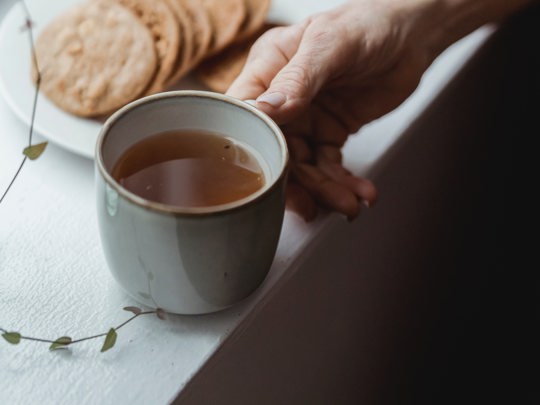
Green Tea: A powerhouse of antioxidants, green tea is lauded for its potential to prevent cancer, promote brain health, and improve heart health. Matcha, a finely ground green tea, offers a concentrated dose of these benefits.
Black Tea: Robust and flavorful, black tea boasts strong antioxidants and may help lower cholesterol and blood pressure.
Chamomile Tea: This calming herbal infusion promotes relaxation, reduces anxiety, and aids sleep. Its gentle nature makes it ideal for bedtime.
Hibiscus Tea: Rich in antioxidants and vitamin C, hibiscus tea may help lower blood pressure and cholesterol. Its tart flavour makes it a refreshing alternative to traditional teas.
Turmeric Tea: This golden brew combines the anti-inflammatory power of turmeric with the warming comfort of ginger. It's a potent ally for joint health and overall well-being.
Peppermint Tea: Peppermint tea may assist in relaxing the muscles in your digestive system, potentially easing symptoms like bloating, gas, and indigestion. Some studies suggest it may even offer relief for irritable bowel syndrome (IBS).
Many cultures have long traditions of using specific teas for various health benefits, often based on generations of experience and herbal knowledge.
Green Tea: Revered for its detoxifying and weight-loss properties, green tea like Longjing is a staple in Traditional Chinese Medicine (TCM). It's used to improve digestion, clear heat, and boost overall health.
Chrysanthemum Tea: This delicate floral tea is cherished for its ability to clear heat and toxins, soothe sore throats, and combat inflammation. It's often enjoyed during cold and flu season.
Matcha: Used in traditional tea ceremonies, matcha is known for its calming and focus-enhancing properties due to its high L-theanine content. It's also packed with antioxidants and is believed to strengthen the immune system.
Hojicha: Roasted green tea, hojicha contains less caffeine than other green teas and is considered suitable for evening consumption. It's used in TCM to aid digestion and soothe the stomach.
Chai: Traditionally made with black tea, ginger, and spices like cardamom and cloves, chai is more than just a beverage. It's considered a digestive aid, a warming tonic, and a natural cold remedy.
Tulsi (Holy Basil) Tea: This herbal infusion is revered for its antibacterial and adaptogenic properties. It's used to combat stress, boost immunity, and improve overall well-being.
Mint Tea: A ubiquitous symbol of hospitality, Moroccan mint tea is not just refreshing but also believed to aid digestion and soothe upset stomachs. The fresh mint leaves add a digestive enzyme that aids in breaking down food.
Of course, every Brit will know the incredible combination of tea with a sweet treat. Be it a simple biscuit or perhaps a flavourful scone with cream and jam. However, across the world, tea is so incredibly diverse and can be paired with a huge number of delicious things.
Sunrise: Start your day with a breakfast tea, strong and malty like Assam or English Breakfast. Its robust character complements the rich flavours of savoury breakfast staples like eggs, bacon, and sausage. The tannins in black tea can even cut through the fat, leaving your palate refreshed.
Dim Sum: When exploring the savoury world of dim sum, reach for a light oolong tea. Tieguanyin's floral notes and gentle astringency dance with the diverse flavours of dumplings, steamed buns, and spring rolls. It's a flavour duet that's both complex and refreshing.
Spicy: Craving Indian curry or Thai stir-fry? Chamomile tea comes to the rescue! Its subtle sweetness and calming properties help balance the bold heat of spicy dishes. The chamomile's delicate floral notes also add a layer of aromatic complexity, creating a surprisingly harmonious pairing.
Sushi: Enhance the delicate flavours of sushi with Sencha green tea. Its grassy notes and vegetal character complement the fresh seafood and seaweed, while the slight bitterness cuts through the rice, creating a clean and balanced finish.
Afternoon: Indulge in the classic tradition of afternoon tea with a cup of Earl Grey. Its distinctive bergamot aroma pairs beautifully with the sweetness of scones, clotted cream, and delicate finger sandwiches. The citrusy notes add a refreshing touch, making it a perfect accompaniment to tea-time treats.
Sweets: After a decadent dessert, reach for a cup of white tea. Its subtle sweetness and floral notes flawlessly complement the richness of cakes, pastries, and chocolate. The tea's delicate character avoids overpowering the dessert's flavour, resulting in a harmonious end to the meal.
Mediterranean Feasts: When enjoying a plate of grilled vegetables, hummus, and olives, opt for a mint tea. The fresh, invigorating aroma and slightly sweet taste perfectly complement the earthy flavours of the Mediterranean diet. The mint's cooling effect also leaves you feeling refreshed after a savoury meal.
Hearty Dishes: Warm up with a hearty stew or roasted vegetables and pair it with a robust black tea like Darjeeling. Its full-bodied character and spicy notes stand up to the richness of the dish, while the slight tannic grip cleanses the palate with each bite.
Fruits: Enjoying a colourful salad full of berries and citrus fruits? Hibiscus tea is your perfect match! Its tart and fruity notes sing alongside the sweetness of the fruit, creating a vibrant and refreshing pairing. The tea's deep red colour adds a visual element to the meal, making it a feast for the eyes and taste buds.
Late-night comforts: Relaxing with a bowl of warm, creamy soup before bed? Ginger tea is your soothing companion. Its spicy warmth and calming properties ease digestion and create a cosy atmosphere for a quiet night in. The gentle ginger flavour adds a subtle twist to the creamy soup, leaving you feeling comforted and content.
From the first sip of a sunrise brew to the last comforting cup before bed, tea seamlessly adapts to suit any occasion, a chameleon of flavour and function.
Morning Energy Boost:
Black Tea: Robust and invigorating, black tea like Assam or English Breakfast kickstarts your day. Caffeine awakens your senses, while tannins sharpen your focus, preparing you to tackle any morning hurdle.
Mid-Day Focus:
Oolong Tea: This versatile tea strikes a balance between caffeine and calming properties. Tieguanyin's floral notes and gentle astringency refresh your mind, while its moderate caffeine content enhances alertness without the jitters.
Afternoon Delight:
Green Tea: Delicate and revitalizing, green tea like Sencha or matcha offers a moment of zen in the bustling afternoon. Its subtle grassy notes and vibrant green color soothe the mind, while L-theanine promotes relaxation and focus, helping you reclaim your centre.
Post-Snack Sweetness:
White Tea: This delicate tea, like Bai Mu Dan or Silver Needle offers soft floral notes and natural sweetness to complement sweet treats without overpowering them, leaving you with a light and happy feeling.
Evening Tranquility:
Chamomile Tea: Soothe the day away with the gentle embrace of chamomile tea. Its chamomile blossoms release a calming aroma and subtle floral notes, easing stress and preparing your body for restful sleep.
Summer Refreshment:
Iced Tea: On a hot day, nothing beats a glass of chilled tea. Experiment with fruity infusions like hibiscus or berry blends, or try classic black tea with lemon and ice for a tangy twist. The cool liquid and bright flavours will instantly refresh and revitalize you.
Special Occasions:
Earl Grey: Mark a special moment with the refined elegance of Earl Grey. Its distinct bergamot aroma and smooth character lend a touch of luxury to afternoon tea gatherings or intimate conversations.
Herbal Infusions: Celebrate festive occasions with unique herbal blends. Peppermint's invigorating aroma enlivens holiday gatherings, while ginger's warmth and spice complement savoury winter dishes.
Beyond these examples, the adaptability of tea is endless. Want a post-workout pick-me-up? Green tea's antioxidants can help with muscle recovery. Craving a cosy winter warmer? Spiced chai tea with ginger and milk offers comforting warmth in flavour and scent. The perfect tea for any occasion is the one that resonates with your mood and needs. So, explore the diverse world of teas, experiment with flavours and rituals, and let each cup suit your own unique preferences.
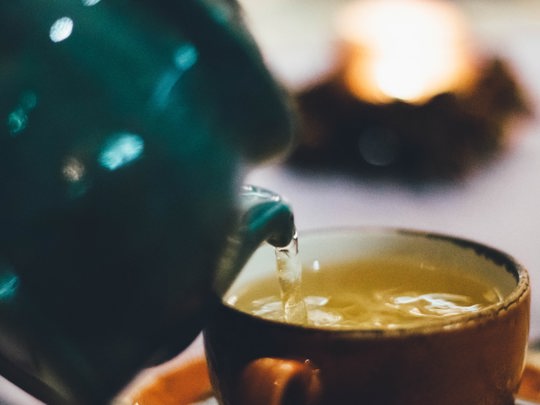
Consider your taste: Do you prefer bold and robust flavours, like those of black tea, or delicate and grassy notes, like in green tea? Experiment with different types and find what resonates with your palate.
Think about the occasion: Do you seek an invigorating morning brew or a calming evening ritual? Each tea type caters to different moods and moments.
Explore health benefits: Many teas boast specific health properties, like green tea's antioxidants or ginger tea's digestive aid. Choose types that align with your wellness goals.
Explore blends: Tea masters often create unique blends to cater to specific tastes or health benefits. Don't be afraid to experiment with these diverse offerings.
Travel the world: Each region boasts unique tea-growing traditions and flavours. Explore teas from different countries to expand your palate and learn about various brewing methods.
Make it a ritual: Brewing and enjoying tea can be a mindful and relaxing experience. Create a special ritual around your tea time, adding ambience and intention to each sip.
There's truly no one-size-fits-all answer! The beauty of tea lies in its vast diversity, catering to individual preferences and needs. The journey to finding your perfect cup is part of the tea experience itself. Experiment, explore, and let your palate guide you. With each sip, you'll discover new flavours, awaken your senses, and nourish your body and soul.
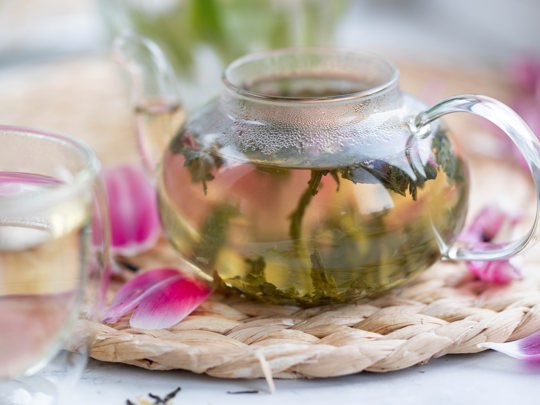
Proper tea storage is crucial for preserving the delicate flavours and aromas of tea leaves. Here are some key tips to ensure your tea stays fresh and delightful.
Airtight is essential: Invest in airtight containers for your tea. Glass jars, ceramic canisters, or even well-sealed metal tins work well. Avoid plastic containers, as they can absorb flavours and odours.
Darkness is your friend: Light degrades tea, so store your containers in a cool, dark place away from direct sunlight or windows. Pantries, cabinets, or even opaque boxes are ideal.
Size: Choose containers appropriate for the amount of tea you use. Avoid storing large quantities in a small container, as you'll be opening it more often, exposing the tea to air and moisture.
Cool and dry is key: Aim for cool and dry storage conditions, ideally around 50-60°F (10-15°C) and with humidity below 60%. Avoid storing tea near heat sources like ovens or stoves, and keep it away from damp areas like sinks or dishwashers.
Refrigeration: While some teas like green tea can benefit from short-term refrigeration (2-3 weeks), it's generally not recommended. The cold temperatures can dull the delicate flavours and aromas, and moisture condensation can spoil the leaves. If you choose to refrigerate, store the tea in an airtight container separate from other food items.
Separate your stash: Different teas can absorb each other's flavours and aromas, so avoid storing them together. Keep black teas, green teas, oolongs, and herbal infusions in separate containers.
First in, first out: Use your teas in the order you bought them. Avoid scooping from the same container repeatedly, as it exposes the remaining tea to air and can lead to uneven ageing.
Transfer loose-leaf teas from their original packaging: If your tea comes in a paper or cardboard box, transfer it to an airtight container for better storage.
Label your containers: Clearly label your containers with the type of tea and date of purchase to easily identify and avoid outdated teas.
Smell and taste as a test: If you're unsure if your tea is still fresh, give it a sniff and a taste. If it has lost its aroma or tastes stale, it's best to discard it.
Beyond the fragrant embrace of a steaming cup, lies a vast landscape, the tea industry. A complex web of cultivation, processing, and trade connects us to the farmers who nurture the leaves. But as with any industry, challenges like unfair labour practices, environmental degradation, and unsustainable packaging cast a shadow. However, a movement is brewing, a conscious shift towards ethical sourcing and eco-friendly practices. Let's explore the importance of sustainability in the tea industry and how it can create a richer brew for everyone involved:
Fair prices for farmers: Fair trade practices ensure farmers receive a fair price for their tea, empowering them to improve their livelihoods, invest in their communities, and achieve economic stability. Fair trade also promotes long-term partnerships, fostering trust and transparency throughout the supply chain.
Safe working conditions: Certified fair trade farms prioritize the health and well-being of their workers. This includes safe working environments, freedom of association, and prohibition of child labour. Supporting fair trade guarantees that your tea isn't steeped in exploitation.
Healthy ecosystems: Organic farming practices nourish the soil with natural fertilizers and pest control methods, safeguarding biodiversity and creating healthy ecosystems. This protects not just the crops but also the surrounding communities and natural resources.
Chemical-free tea: By choosing organic tea, you're opting for a cup free from harmful chemicals and pesticides. This protects your health and promotes a cleaner environment for future generations.
Minimizing waste: Sustainable packaging alternatives like biodegradable materials, reusable tins, and recycled paper are replacing plastic and single-use options. This reduces landfill waste and protects our planet.
Reduced carbon footprint: Choosing tea packed with environmentally conscious materials minimizes the carbon footprint associated with packaging and transportation. Every sip becomes a vote for a greener future.
Look for certifications: Fair trade labels like Fairtrade International and USDA Organic can guide your choices. Research brands committed to sustainability and transparency.
Ask questions: Engage with your tea vendor. Inquire about their sourcing practices, environmental initiatives, and packaging choices. Make informed decisions based on their answers.
Shop local: Supporting local tea traders who source ethically and prioritize sustainability empowers your community and reduces your carbon footprint.
The world of tea is brewing with innovation, with many predictions for the future of the tea industry and tea consumption.
Curated experiences: Tea subscriptions deliver hand-picked selections right to your doorstep, introducing you to new flavours, regions, and brewing methods. These curated boxes often cater to specific preferences and dietary needs, or even offer seasonal choices, allowing for a whole new method of enjoying tea directly to your home.
Community and education: Subscriptions often go beyond just the tea itself, offering access to online communities, brewing tips, and educational resources. This fosters a sense of connection and expands your tea knowledge, making every cup a new adventure.
Immersive experiences: From bustling tea markets in Asia to serene plantations in Africa, tea tourism offers a deeper understanding of the journey from leaf to cup. Travelers can immerse themselves in the culture, traditions, and landscapes that nurture the tea they love.
Connecting with producers: Tea tourism also fosters meaningful connections with the people who cultivate and craft the tea we enjoy. This promotes fair trade practices, cultural exchange, and a renewed appreciation for the human stories behind each cup. Seeing the stories behind tea, as opposed to simply grabbing it from the shelf, can be significant for the supplier and the consumer.
Smart kettles and teapots: High-tech teaware precisely controls temperature, steeping times, and even water flow, ensuring perfect results every time. These gadgets cater to specific tea types and preferences, taking the guesswork out of brewing and elevating the entire ritual.
Mobile apps and brewing guides: Gone are the days of vague instructions on tea boxes. Interactive apps and smart devices guide you through the brewing process, adjusting settings based on the tea you choose and personalising your experience.
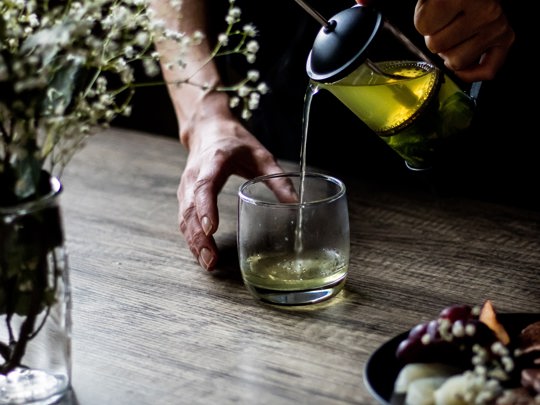
Flavour Fusions: Tea's versatility as a base could lead to exciting cross-cultural flavor fusions. Imagine Thai-inspired blends with lemongrass and ginger, or Mexican-inspired blends with hibiscus and chilli. Tea masters could collaborate with chefs and mixologists to create unique tasting experiences.
Functional Focus: The trend towards functional beverages shows no signs of slowing down. We can expect to see more teas enriched with adaptogens, probiotics, and other health-promoting ingredients, targeting specific wellness goals like stress reduction, cognitive enhancement, or immunity support.
Personalised Tea Blending: Technology could offer personalized tea blending experiences. Imagine AI-powered platforms that analyze your taste preferences and health goals to recommend custom blends or even design blends on the spot using smart tea machines.
Sustainability Redefined: Ethical sourcing and eco-friendly practices will become even more ingrained in the tea industry. Expect innovative solutions like carbon-neutral farming
practices, water-efficient cultivation methods, and fully biodegradable packaging options.
Community Cultivation: Local tea gardens and communal brewing spaces could become more widespread, fostering a sense of community and promoting sustainable tea consumption. These spaces could offer educational workshops, social gatherings, and a platform for local tea producers to connect directly with consumers.
Tea Ritual Renaissance: As mindfulness and self-care gain importance, traditional tea rituals could experience a resurgence. Expect to see a renewed focus on the calming and meditative aspects of tea drinking, with people incorporating tea ceremonies and mindful brewing practices into their daily routines.
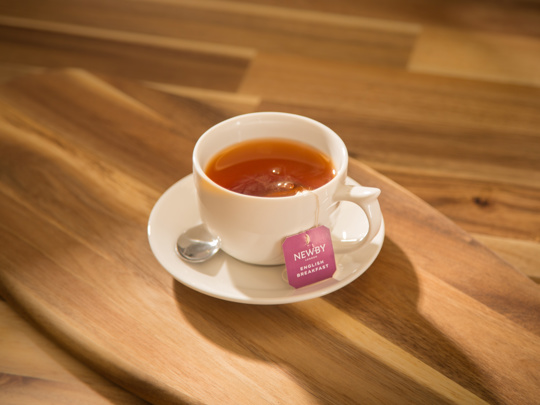
At Cafè Du Monde, we understand that beverages are the cornerstone of meetings, welcome, greetings and even rituals. Your morning coffee or your evening green tea before bed can truly make or break the day and help you form healthy and personal habits. As such, we stock a wide range of beverages to make every day delicious.
Our tea collection includes a huge range of classic teas like Earl Grey, Oolong and English Breakfast, as well as other herbal teas. Our Newby range includes choices such as Chamomile, Green Lemon, Ginseng Oolong, and Rooibos, and fruity flavours such as Summer Berries and Strawberry Mango. If you prefer a silken pyramid, the Newby range includes English Breakfast, Jasmin Princess, Upper Assam and more. As well as a delicious selection of loose leaf teas.
Browse our website for more information on our teas, coffees and equipment. Should you need any recipes, commercial coffee machines, coffee, teas or brewing advice, you’ll find it at Cafè Du Monde.